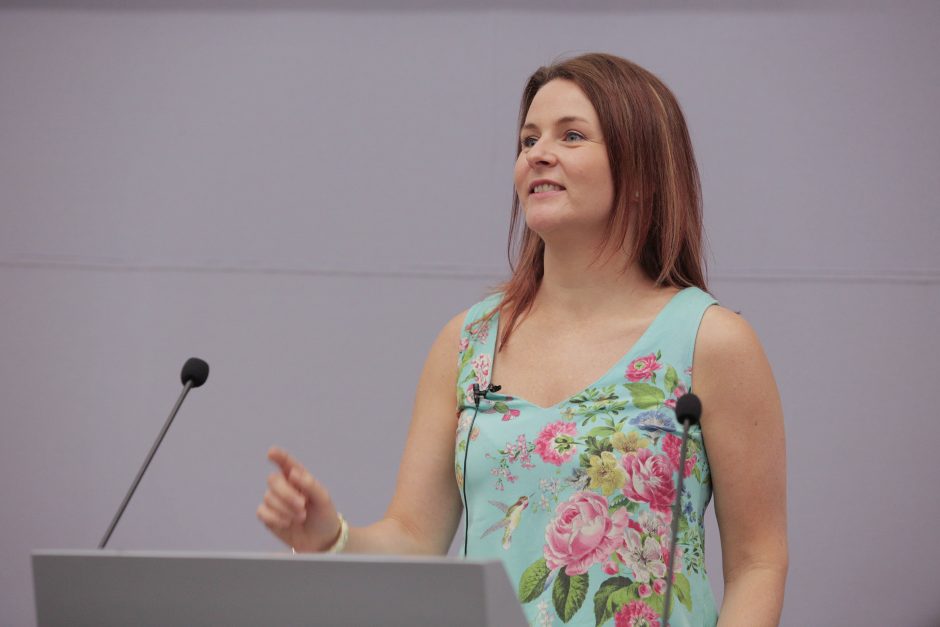As the UK heads into winter with a looming gas crisis, and preparations for COP26 put energy in the spotlight, there is a growing urgency for alternative models of power generation.
Emma Bridge, CEO of Community Energy England (CEE), has for several years been at the forefront of lobbying efforts for citizen-led renewables as a key driver for the carbon transition. But while she sees the current crises as a moment of opportunity for the community energy sector, she warns it is still hampered by a lack of long-term planning from the UK government.

“We’re still waiting for the government’s net-zero strategy, which is due to arrive ahead of COP26,” she says. “We’re still waiting for the Heat and Building Strategy. We still don’t know the long-term plan. Energy efficiency schemes are not working, and when you look at charging regimes, they are very complicated. There is none of the clarity and certainty and confidence community energy outfits need to build their business model.”
This support is needed, she says, because the sector is not only working for the most commercially viable projects, but for the most just and environmentally beneficial, which means its margins are tighter.
“Nationally the real push is for market forces in energy,” she warns. “They don’t take into account the social and environmental benefit – that’s a huge missing piece of the puzzle within government.”
There are still excellent things happening, she adds, but these are in isolated pockets where organisations have projects up and running which give them a base to operate from, and this makes it difficult to scale new developments up or replicate them across the country.
But there is optimism. “After the removal of subsidies, there has been a shift away from generation to a whole-system approach,” she says, “dealing with things like energy efficiency and battery storage, looking at how energy fits within the community and impacts on lives.”
This has implications for other sectors, such as travel. Ms Bridge says that in rural – and some urban –
areas, people may be struggling to access transport; one solution which community energy can deliver is to offer EV carpool services, powered by solar. “Communities are coming together to meet challenges; energy is part of that.”
She adds: “We can also look at streets as a whole; where there are solar panels residents can use a communal battery so everyone can benefit. It’s not just about tech innovation, it’s about how it drives social innovation.”
With the country facing some hard decisions and tough challenges in its drive to net-zero, public consent is vital, she argues, and community energy can play a crucial role in gaining that consent. “It’s about increasing participation and driving behavioural change. It helps people to understand their own role, to understand what they can do. We won’t reach net-zero without influencing people. The development of community energy can also bring skills, volunteering opportunities and jobs into neighbourhoods.”
CEE has been working with its sister body Community Energy Scotland and REScoop, the European federation of citizen energy co-operatives, to develop a message for COP26.
“Our focus is the build-up to COP26, making sure the UK government is taking a proper leadership role and standing by its warm words,” she says.
Projects include work with creative collective Art And Energy, which is turning the public’s calls for urgent action on climate into a mass-participation art installation in Glasgow to coincide with the summit. And CEE will be at COP26 throughout the
12-day event.
“There’s a lot of good work being done around the world but we‘re a long way from where we need to be,” says Ms Bridge. “There’s too much emphasis on what individuals should do and not enough on the responsibility of big corporations, but there are also opportunities for people and we are emphasising that within the narrative.”
She adds: “We’re not sure what new things will actually be coming out of COP26 – we need to see more collaboration, more ambition, more innovation, more hard decisions. It is going to be painful but if we do it in the right way there is an opportunity.
“We need clarity and we need the government to support us. Our own vision is something we could grow to 20 times its current size with just modest support from the government.
“We need to put people and communities at the heart of this. Community energy is there, ready to go. We’re not looking for handouts, just certainty and confidence.”